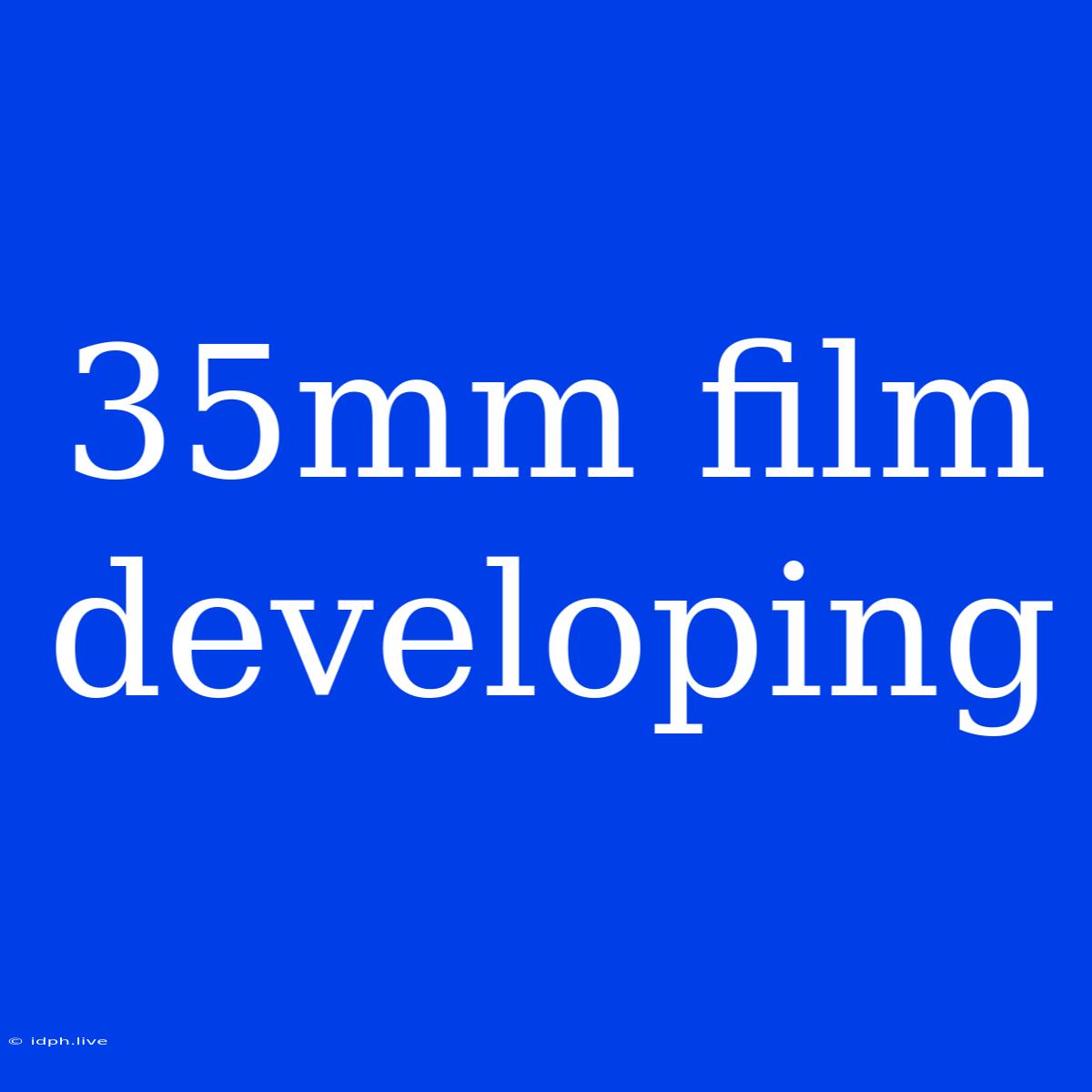35mm Film Developing: A Guide to Bringing Your Images to Life
The magic of shooting on film is undeniable, but the journey isn't complete until you see your images come to life. 35mm film developing is the process of transforming exposed film into stunning negatives, ready for printing or scanning.
Whether you're a seasoned film photographer or just starting out, this guide will walk you through the basics of developing 35mm film, empowering you to take control of your photographic journey.
Understanding the Process
Film developing involves a series of chemical baths that transform the latent image on the film into a visible negative. Here's a breakdown of the essential steps:
1. Developing: This step uses a developer chemical to convert the exposed silver halide crystals into metallic silver, forming the image. The developer's strength and development time influence the contrast and overall look of your images.
2. Stop Bath: A quick rinse in an acidic stop bath halts the development process and prepares the film for the next step.
3. Fixing: The fixer removes unexposed silver halide crystals, ensuring the image is permanent and prevents further development.
4. Washing: Thoroughly washing the film removes any remaining chemicals and ensures a long-lasting negative.
5. Drying: The final step involves carefully drying the film to prevent damage and preserve its quality.
Choosing Your Development Method
You have several options when it comes to developing your 35mm film:
1. Developing at Home: With a dedicated darkroom and a few essential chemicals, you can develop your film at home. This method provides complete control over the process and allows you to experiment with different techniques.
2. Using a Lab: Sending your film to a professional lab is a convenient option, especially if you don't have a darkroom. Labs offer various developing services, including standard black and white, color negative, and slide processing.
3. DIY Developing Kits: For beginners, DIY developing kits offer a convenient way to get started. These kits include everything you need to develop your film at home, making it a great entry point into the world of film developing.
Essential Equipment and Supplies
For Home Development:
- Darkroom: A darkroom is essential for developing film, as light exposure can ruin your negatives.
- Developing Tanks and Reels: These hold the film during the chemical baths and ensure even processing.
- Chemicals: You'll need a developer, stop bath, fixer, and a washing agent.
- Thermometer: Maintaining the correct temperature is crucial for optimal development.
- Timer: Accurate timing ensures proper development.
- Drying Rack: This helps dry the film evenly and prevent watermarks.
For Lab Development:
- Film Canisters: Ensure your film is securely stored and protected during transportation.
- Mailers: Choose appropriate mailers to protect your film from damage during shipping.
Tips for Success
- Properly Handle Your Film: Always handle your film carefully, as fingerprints and scratches can show up on your negatives.
- Follow Instructions: Carefully follow the instructions on your film's packaging and development kit for optimal results.
- Experiment: Don't be afraid to experiment with different development times, chemicals, and techniques to find your unique style.
- Practice: With practice, you'll become more comfortable with the process and develop a consistent approach to film developing.
Conclusion
Developing your 35mm film is a rewarding experience that allows you to fully embrace the unique characteristics of film photography. Whether you choose to develop at home or send your film to a lab, the process is a crucial part of creating stunning and timeless images. So grab your camera, shoot some film, and discover the magic of bringing your photographic vision to life!

